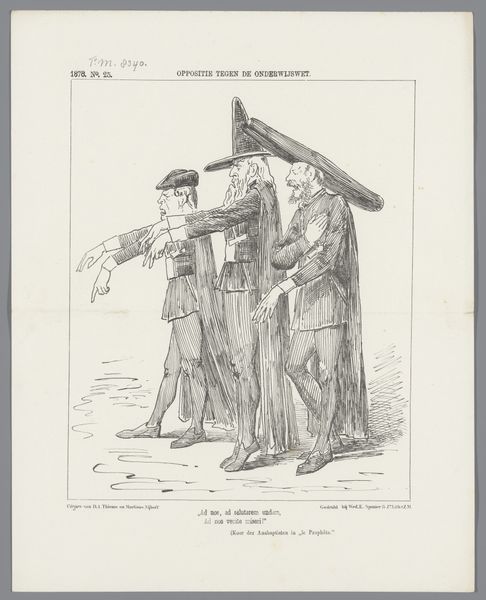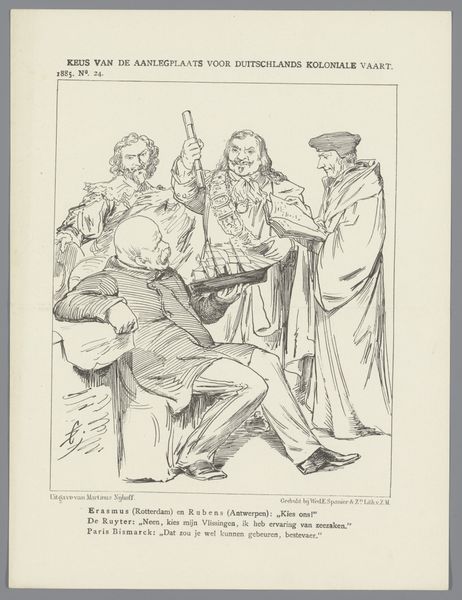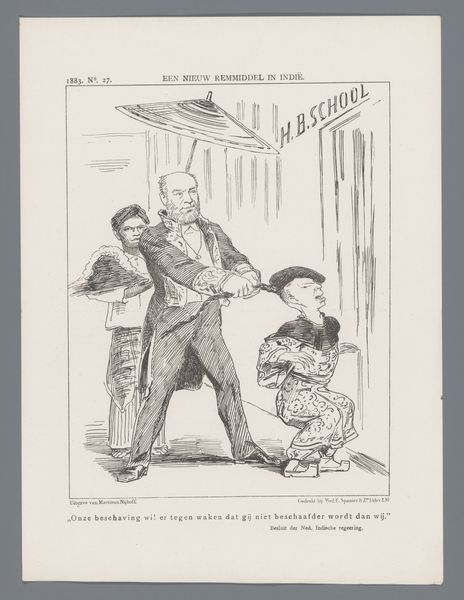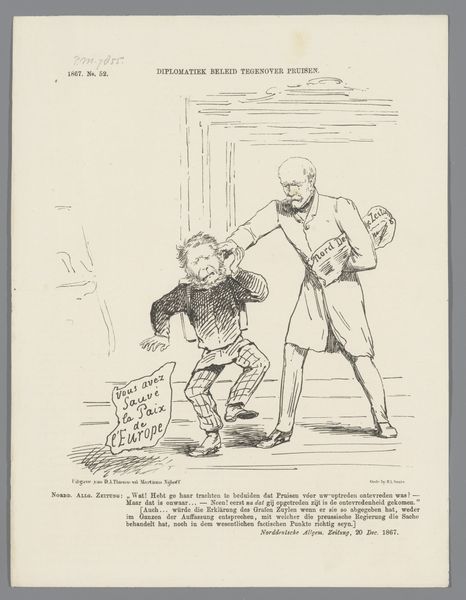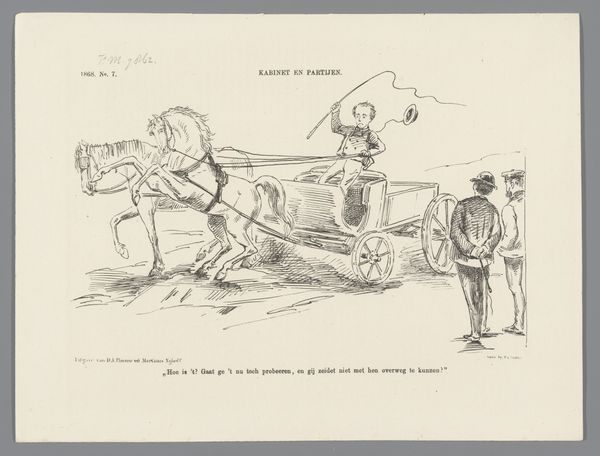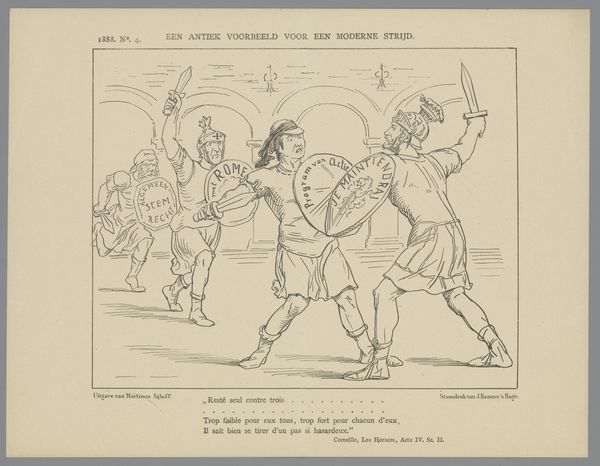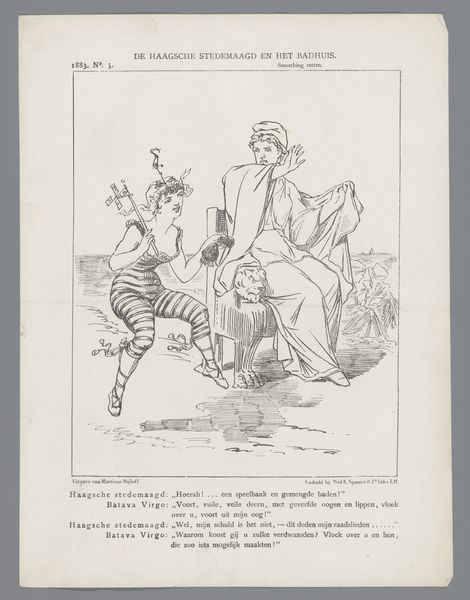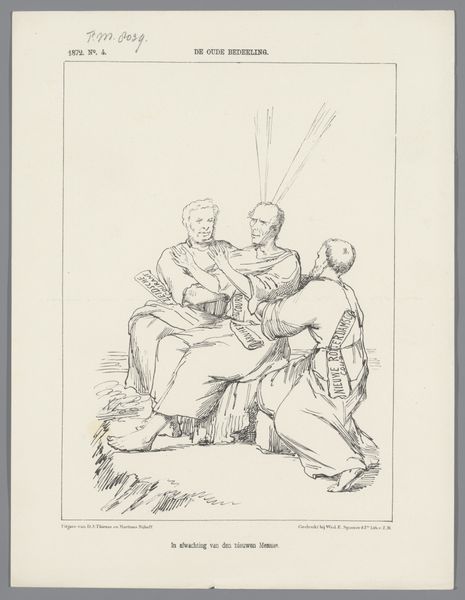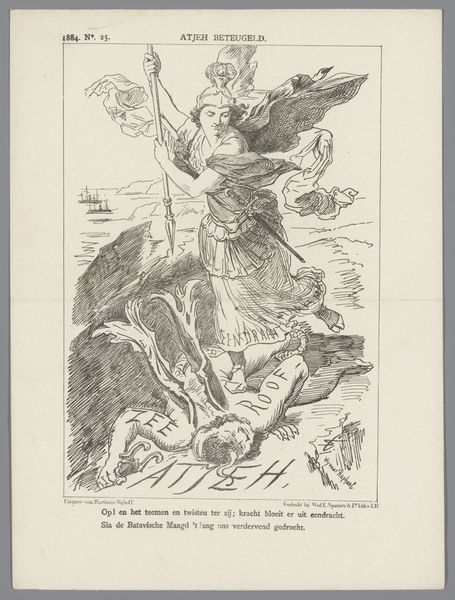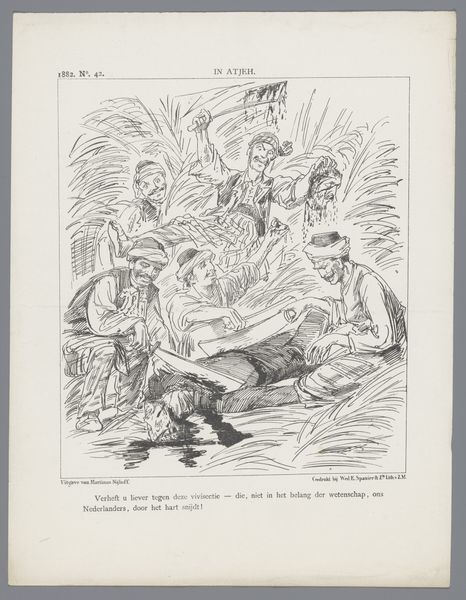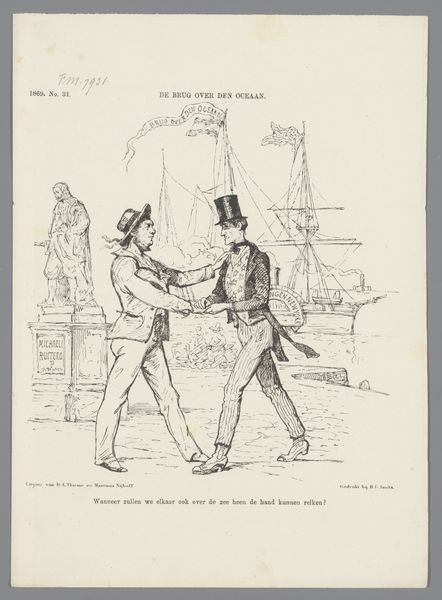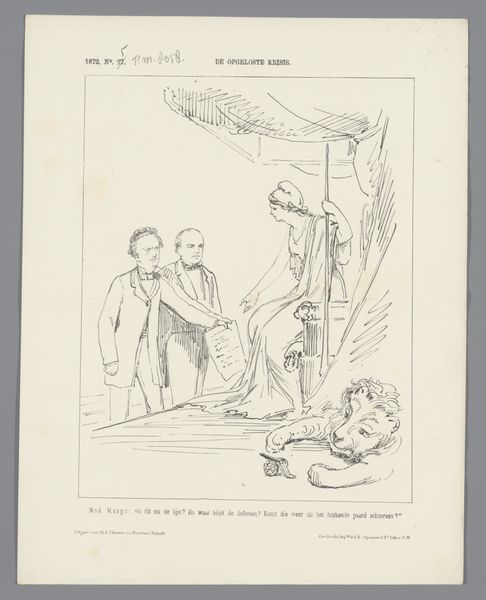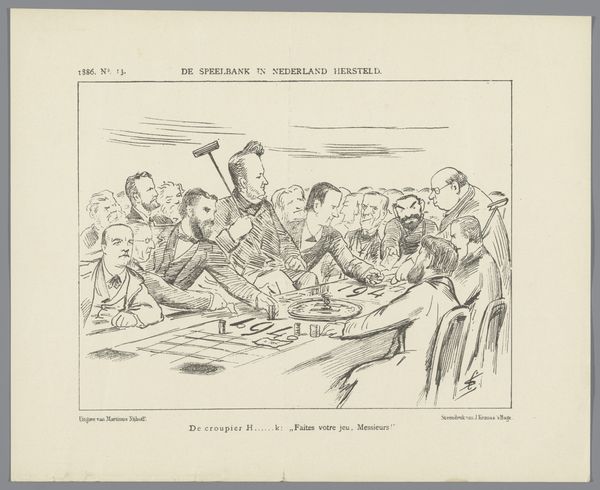
drawing, print, etching, pen
#
drawing
# print
#
etching
#
caricature
#
orientalism
#
pen
#
history-painting
Dimensions: height 275 mm, width 215 mm
Copyright: Rijks Museum: Open Domain
Editor: This is a political cartoon titled "Politieke spotprent over Egypte, 1882," created in 1882 by Johan Michaël Schmidt Crans. It's an etching and drawing and seems to make a strong statement about power. What's your take on this work? Curator: The use of caricature here immediately draws my attention. It invites us to consider how Western powers perceived and represented Egypt in the late 19th century. Note the pyramid in the background, a visual shorthand for Egypt, and how this imagined "Orient" is being contested between figures that we can understand to represent colonial powers. What power dynamics do you think are being represented here, and whose voice is amplified, and whose is silenced? Editor: Well, the "Egyptian" figure seems to be restrained and distressed between what look to be colonial powers. So it definitely gives an impression of unequal power and imperial control. It is a critique on Colonialism? Curator: Exactly! The print’s overt “Orientalism” isn't just decorative, it embodies the way Europe constructed its relationship with the East. Ask yourself, who benefits from this representation? How does it normalize specific power structures? And how might an Egyptian viewer from that time or today respond to it? It challenges us to dissect the legacy of imperialism and its effects on identity and representation. What does the Dutch phrase at the bottom, Fellah, tell us? Editor: Fellah translates roughly to peasant, right? So, putting those words into the mouth of this Egyptian figure, in Dutch no less, and implying they don't have "l'embarras du choix", seems pretty dismissive. Curator: Precisely. Language itself becomes a tool of power, reinforcing a hierarchy. Considering this work now, what lasting impact of these colonial depictions do you see in today's world? Editor: It's a sobering reminder of how art can both reflect and perpetuate unequal power relations. Thanks for highlighting the historical and social layers within this image. Curator: And thank you for prompting a deeper exploration of those layers. Engaging with these difficult histories is crucial for understanding our present.
Comments
No comments
Be the first to comment and join the conversation on the ultimate creative platform.
